Hawkyns
Hawkyns by Atul Kochhar Amersham
Sidling down the hill from the Metro-land modernism of Amersham into the old town feels like sloughing off a year or so with each step. By the time you’ve reached the bottom, you’re resolutely in Jane Austin territory flecked with an England older still with its ancient Market Hall and higgledy-piggledy fifteenth century roof lines. There are a number of tasty reasons for making the descent: the Michelin-starred, AA-rosetted elegance of the Artichoke, Gilbey's old-school comfort and the bright and perky tapas of Pluma for a start. But we were here to sample Atul Kochhar’s Hawkyns which occupies much of the ground floor of a beautiful, grade-II-listed coaching inn (The Crown Inn) famous for featuring in Four Weddings and a Funeral.
A tendril of spiced tandoor smoke reached us as we parked out back. It elicited an almost Pavlovian response that had us rushing across the cobles with ne’er a thought to Hugh Grant/Andy MacDowell shenanigans. Once through the ancient doorway, we were met by the smiling front-of-house staff and shown to our table in the back dining room. It was a lovely, airy space of vast-inglenook-fireplace and original-oak-flooring charm – all very mutton chop and pint of porter, entirely Tom Jones in fact (the foundling that is, not the Welsh crooner). There was something about the juxtaposition of this slice of Merrie England and the ravishing aromas of India that was genuinely exciting.
The restaurant’s trademark tasting menus (carnivore, pescatarian, vegetarian and vegan are all options) are a pleasingly restrained 6 courses, 7 if you give in to the inevitable pull of additional poppadoms (which I suggest you do, as the accompanying mango and chilli chutneys are a delight). Introductory papads also allow you time to consider what to drink with the feast ahead. Beer and lassi are usually the best options with Indian food. For the former, Hawkyns offer a choice of Cobra and a local-ish (from Marlow) Indian Pale Ale as well as, for the died-in-the-wool Europhile, Peroni.
Lassi sadly hasn’t made it on to the menu here which I do think is a shame. I’d love to see what Kochhar’s culinary imagination could make of it. With a profile that runs the gamut from salty to fruity sweet, it certainly has potential. Throw in a slug of white rum or some such (heresy of a particular delicious kind, I know) and we’d probably all be grateful. If that sounds too far in the direction of the pina-colada, feel free to clutch your purist pearls. But, really, who doesn’t like the blowsy charms of sweetened milk and booze in all its creamy-moustachioed glory?
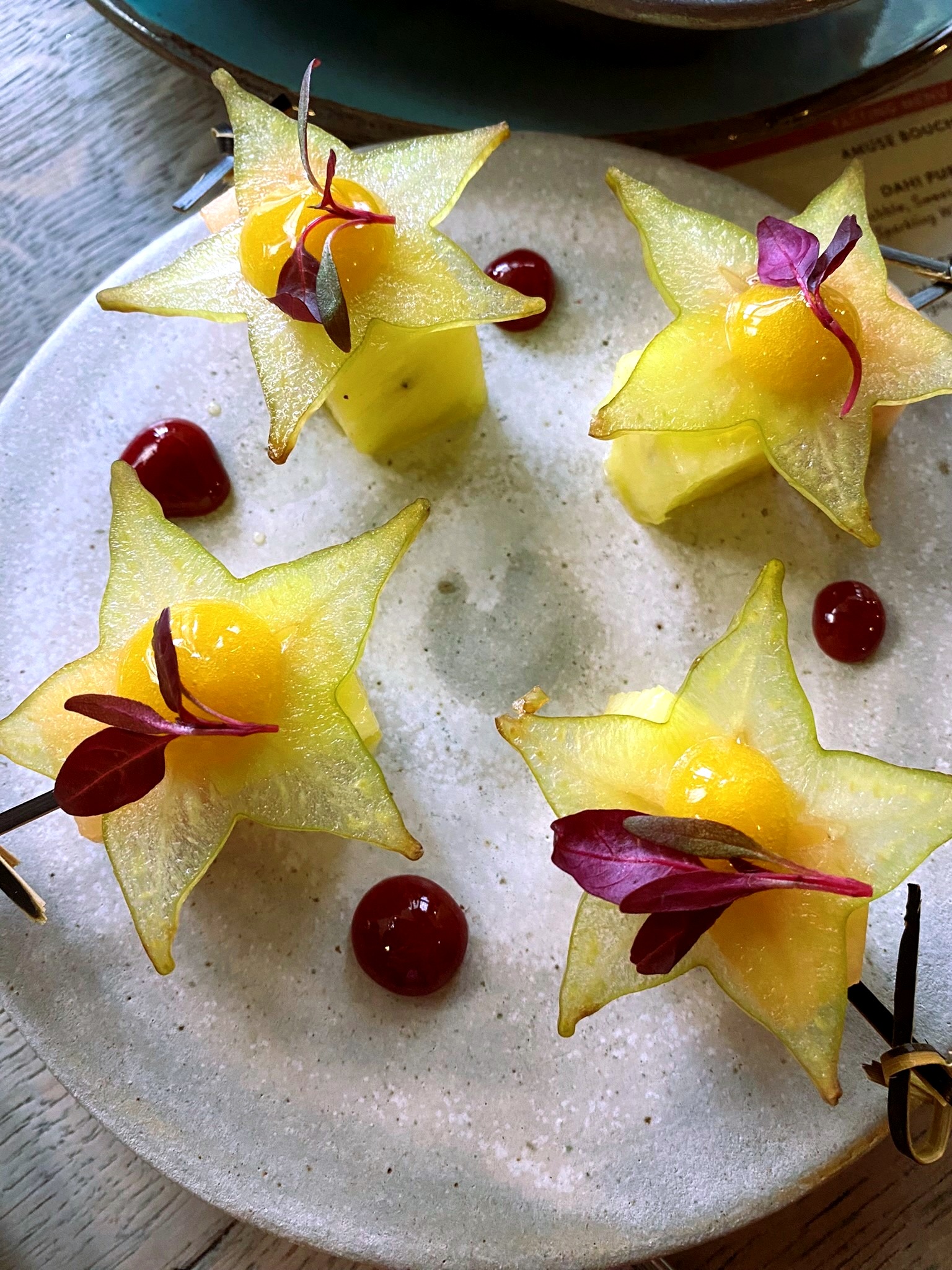
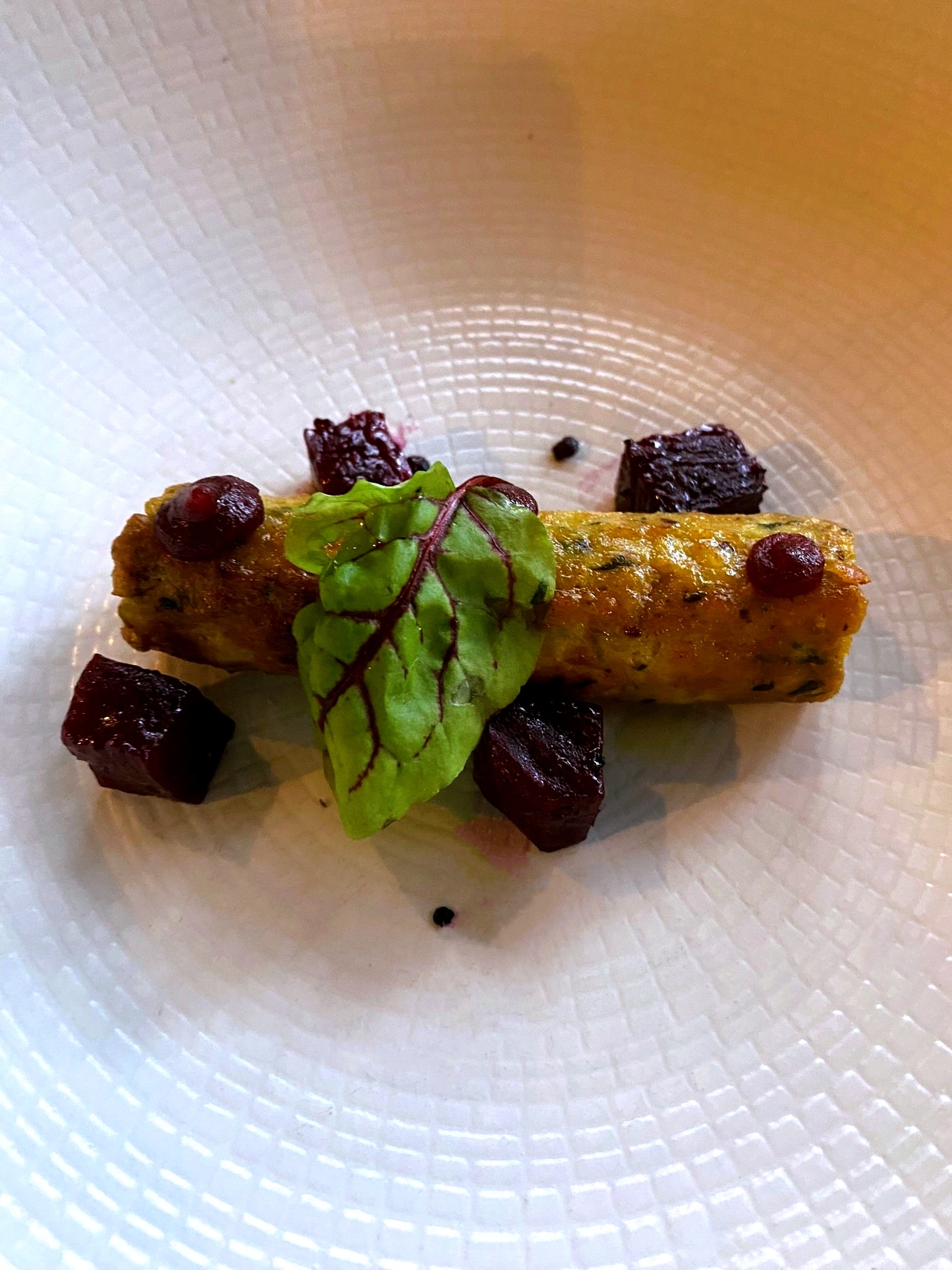
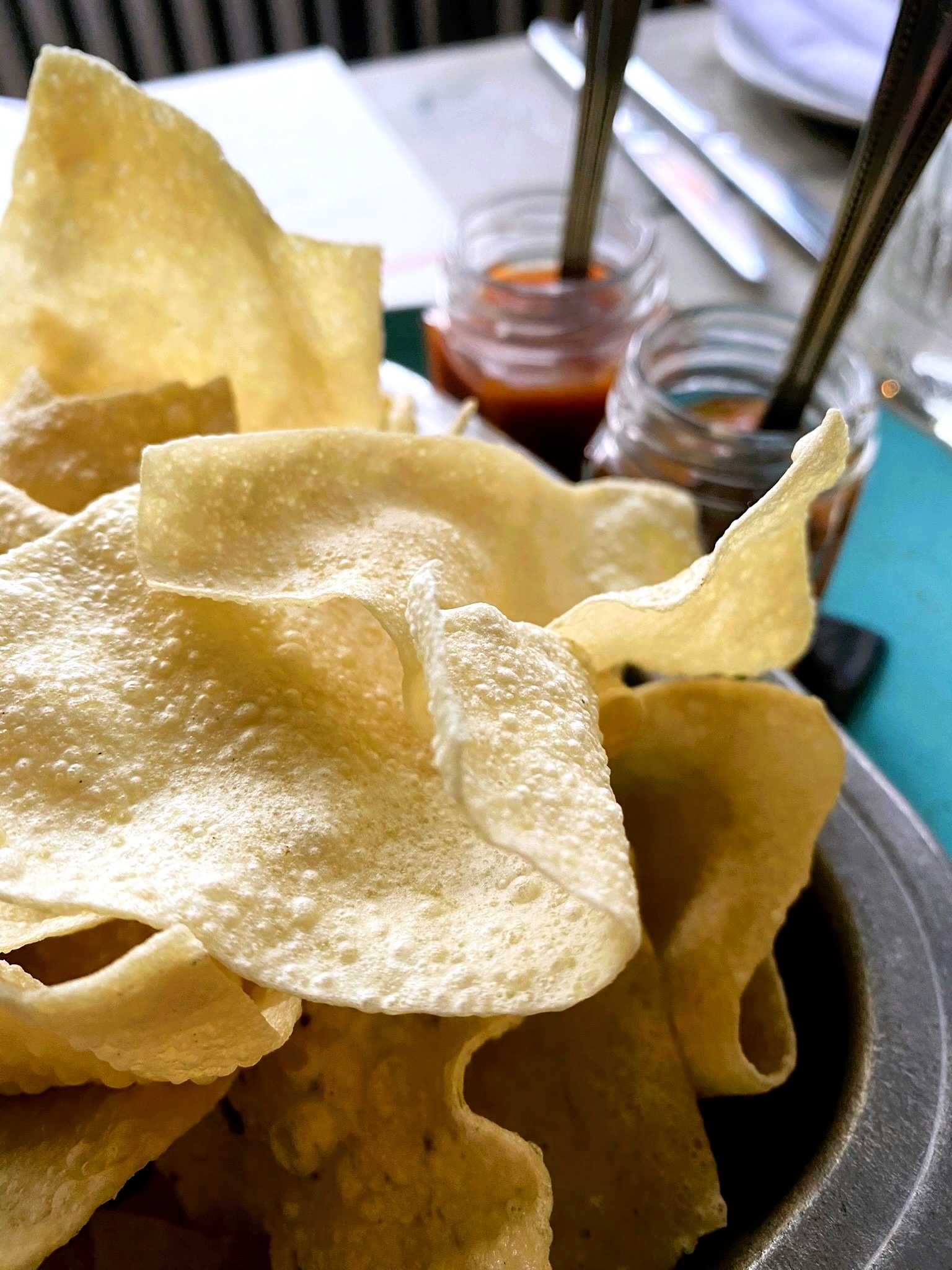
Wine is a trickier customer to pair with the complexities of Indian spicing: it is apt either to founder on the reef of cumin, fenugreek et al or to compete in a somewhat bony-elbowed way for attention. Kochhar’s wine list is sufficiently broad in scope to allow for a good number of possible options. It stretches right up to the gates of Meursault and Gevrey Chambertin (courtesy of Dom. Denis Carre and Joesph Drouhin respectively) but I certainly wouldn’t opt for those here. I tend to favour more homey reds with Indian food, those with their own reasonably robust spicing that can stand up to a good bash with the handi.
There are Malbecs, Mourvèdres and even a Pinotage here that might step up to the plate provided their tannins are well under control (tannins can get peevish and bolshy with spice and chilli heat). Alternatively the fuller-flavoured, even off-dry, end of the white spectrum (Viognier or a petrol-head Riesling from Aus or the US) might do the trick. All are on the menu, along with Planeta’s Syrah Rosé that has just enough oomph if you want something refreshing and summery. We opted to dive straight in with an Indian red, Sula’s full-bodied and warming Dindori Reserve Shiraz. It worked well – nice enough on its own but really shining with the food. Its pepper, liquorice and slight menthol appeal held its own against the complexities of the unfolding menu.
We’d just finished swirling and sampling when the fruity amuse bouche arrived a-top a rather fetching polished-concrete stand. More of a cleanser than an amuser per se, small cubes of ultra-ripe pineapple were paired with crunchy star fruit, pearls of tamarind and tropical coulis. Star fruit is more of a texture than a taste, but it worked well here to refresh the palate before the main events arrived.
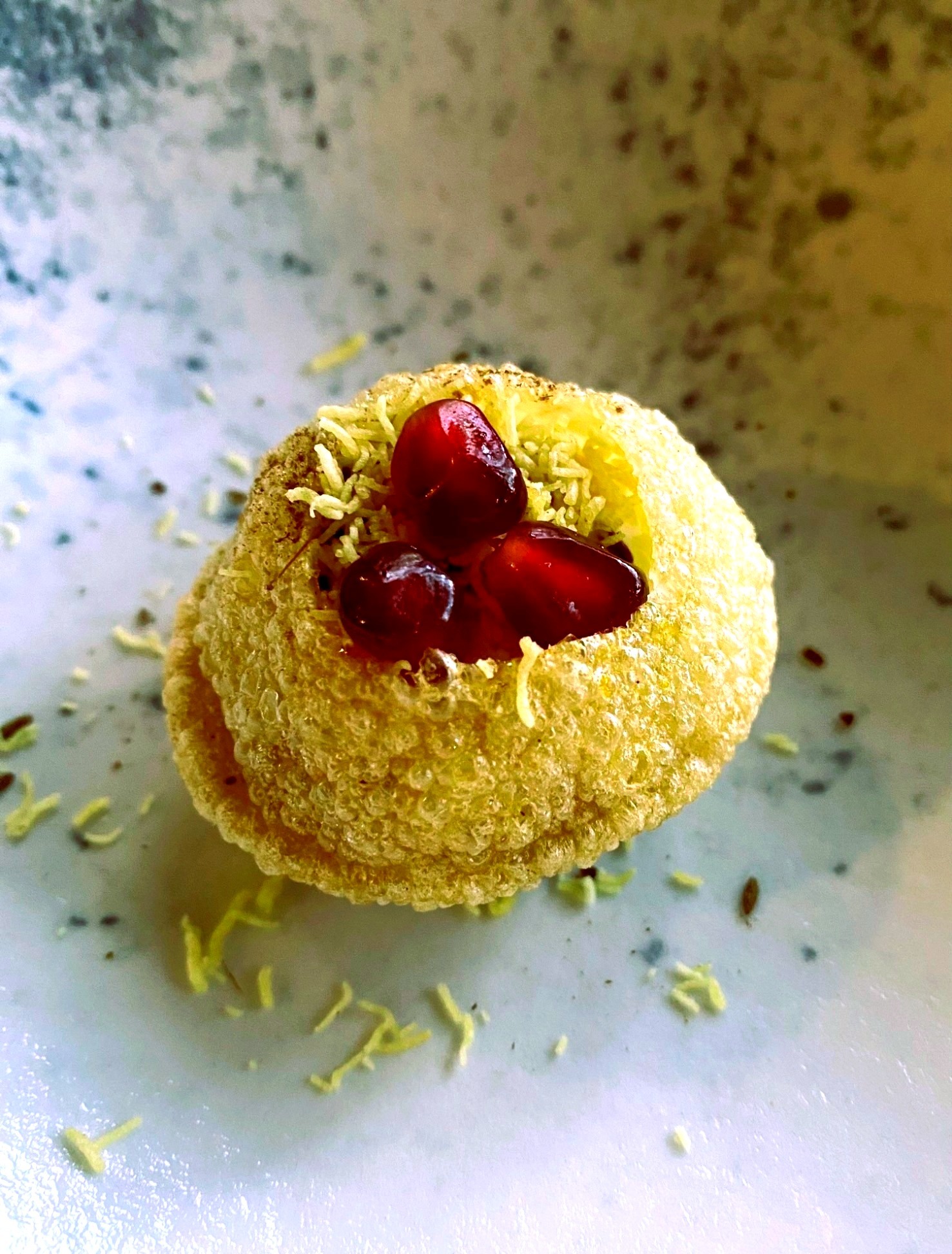
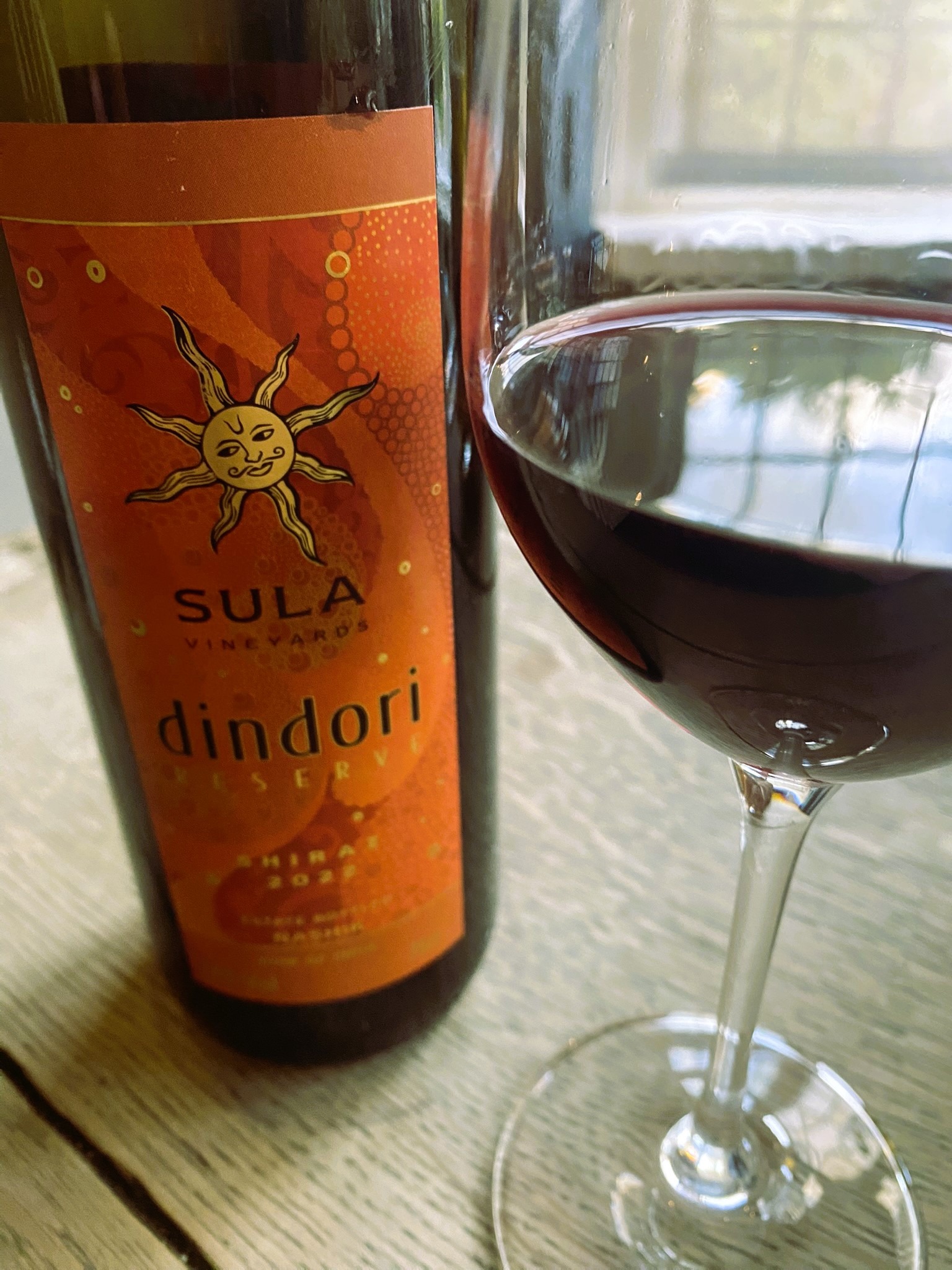
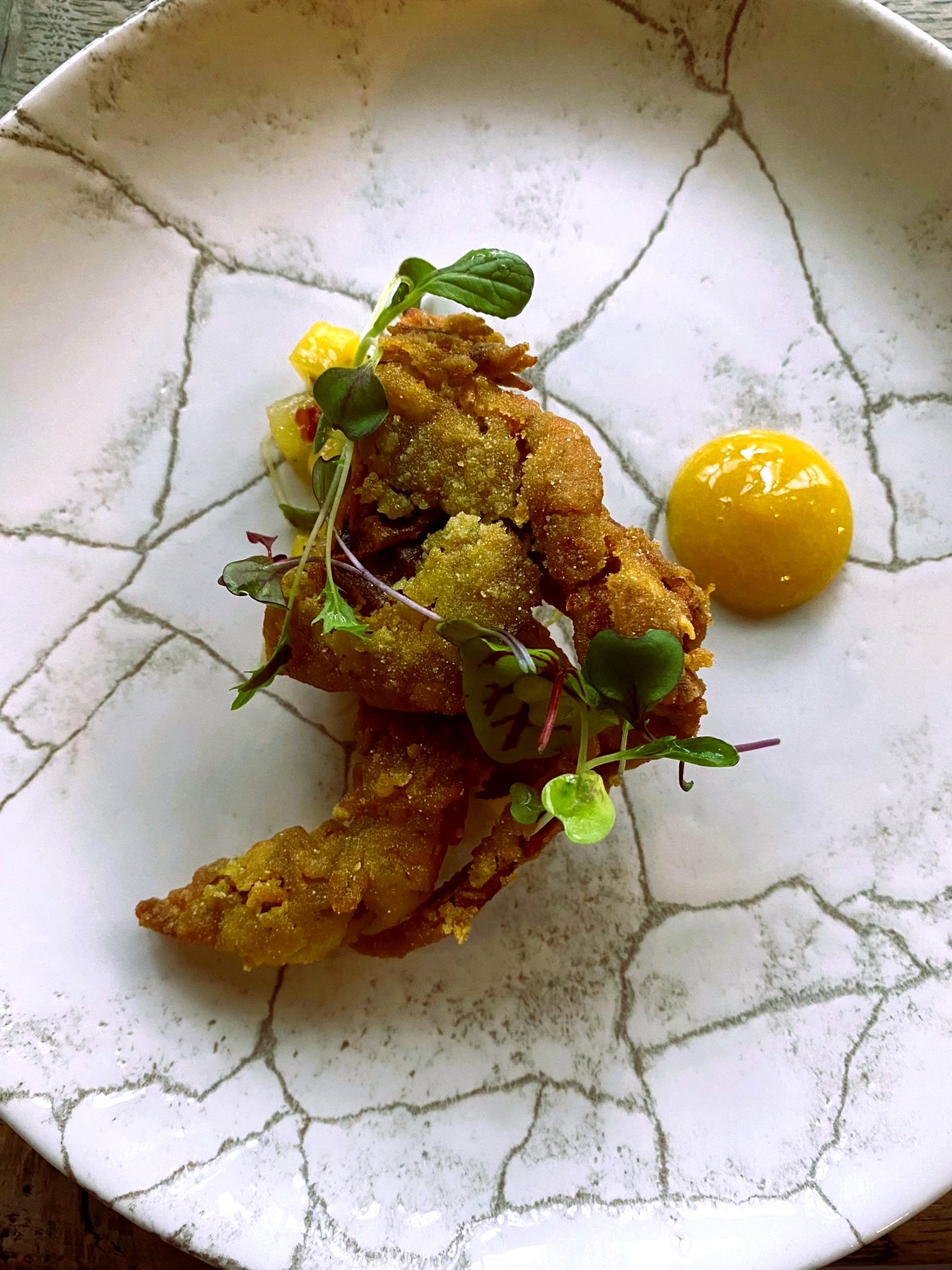
First up was a single, beautifully plated representative of the joys of Indian street food. The entirety of the sub-continent being chaat mad, no street corner is complete without a stall or cart selling one of the variety of fried, spiced snacks. Dahi puri, like its close cousin pani puri, is one of the most popular. It is essentially a very small, crisp puri filled with something warm and spicy like chickpeas or potato and onion, then anointed with sour tamarind and chilli chutneys and any number of crunchy toppings. Designed to be popped into the mouth whole, it’s a riot of flavour and a textural rollercoaster. Hawkyns’ take on the crisp sphere was subtly spiced and elevated with the rosy crunch of pomegranate. The waiter quietly admitted that they were his favourite and that he had been known to scoff six or seven in a sitting – slightly galling in that we only had one a-person. Another one or two really wouldn’t have gone amiss, even in the context of the tasting menu, such were their crunchy deliciousness.
Next came a light soft-shelled crab fried crisp in a nicely salty carapace offset with a tropical-tasting fruit gel and tiny cubes of what I think was a mango salsa. Delicious both. This was quickly followed by a truly diminutive chicken seekh (the word kebab seemingly having been banished from the menu like a badly behaved uncle at a wedding … or indeed a funeral …). The spicing was insistent, fragrant and lifted with a slight chilli warmth, little cubes of confit beetroot and a sweet/sour beetroot chutney complimenting the earthy cumin profile of the meat nicely.

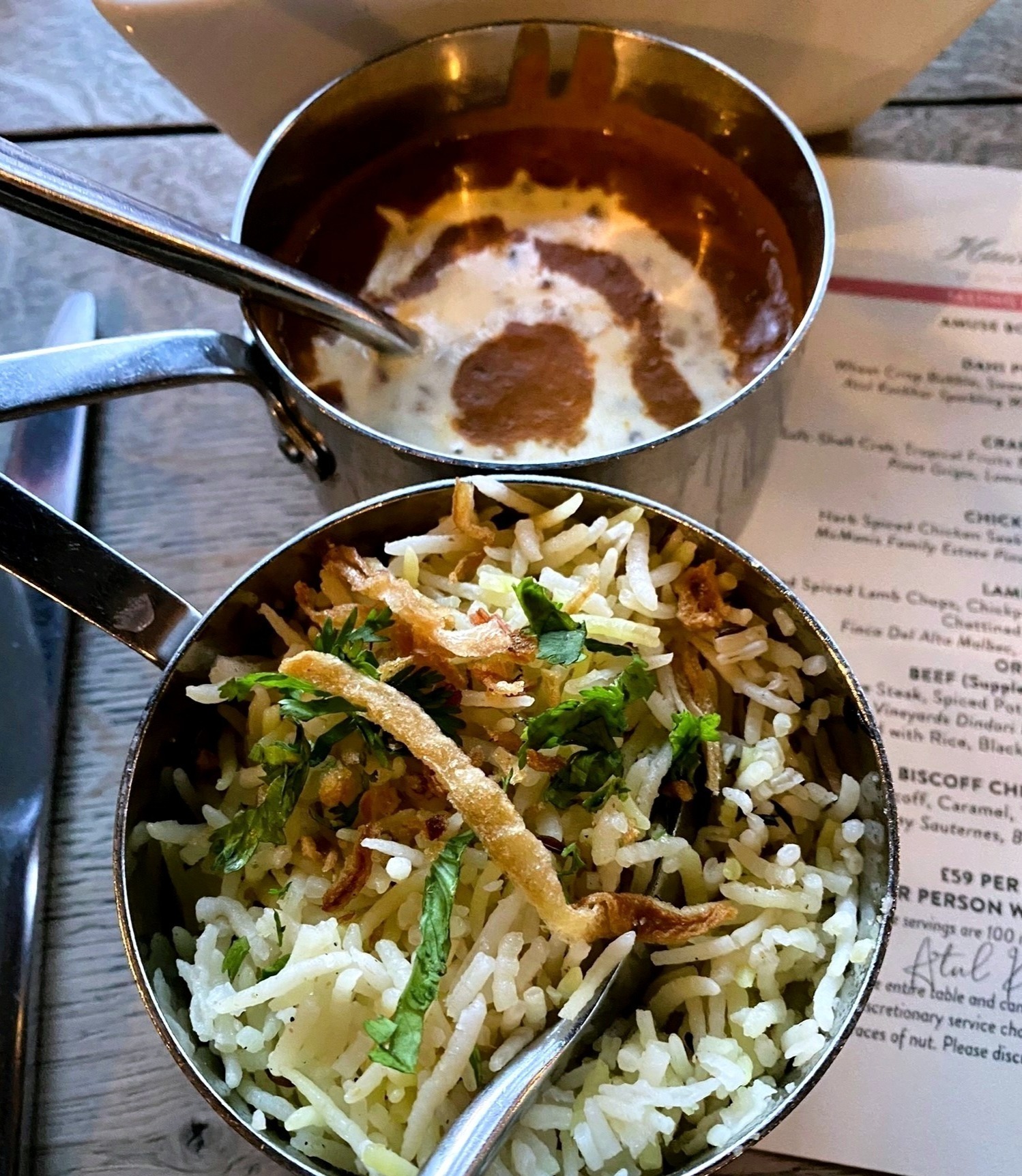

The menu then offered a choice of lamb chops or ribeye steak (for a supplement) as a main course. We all plumped for lamb, a meat whose flavour works so well with spices, herbs, yoghurt and fruit – basically anything the Indian kitchen can throw at it. The chops, or rather chop (for there was but one) came with aromatic chickpeas and what was described as a Chettinad gravy. Presumably this was inspired by one of the glories of Indian regional cooking, the wonderful spiced marsalas way to the south in Tamil Nadu. It was indeed lovely: deeply umami and cleverly shot through with spice.
Rather smart little saucepans of light and fluffy jeera bhaat (rice with lots of ghee and cumin) and black lentil dhal arrived to accompany the lamb. The dhal, which had been cooked slowly for 24 hours, was exemplary – its wonderfully deep taste matched by a soft and creamy texture. It was the standout dish of the evening, quite a lot of praise for a relatively simple dish of lentils. Lovely garlic naans, all pillowy soft and puffing from the tandoor provided excellent-tasting sauce mops.